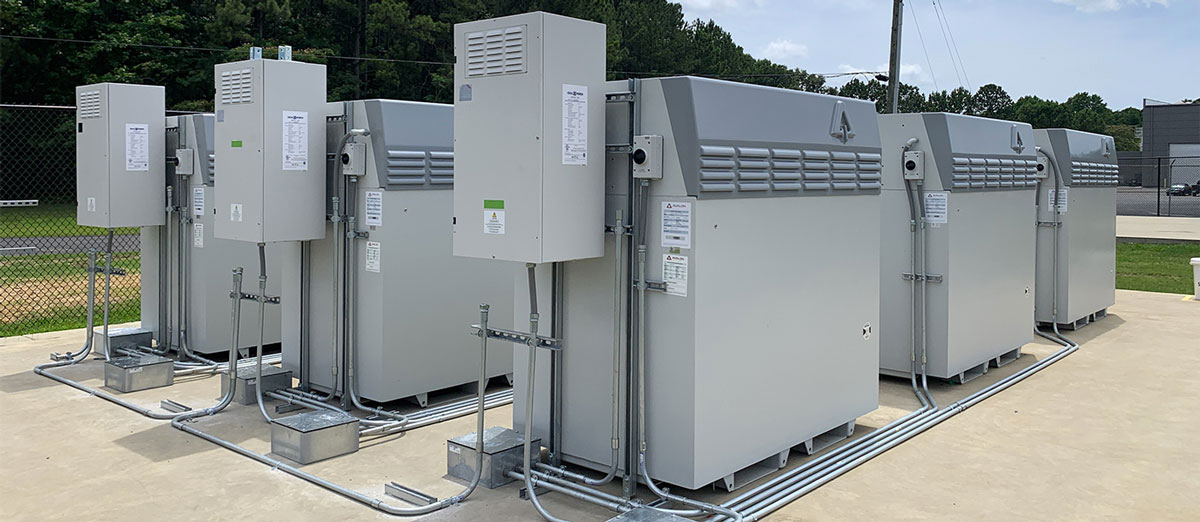The earlier post “Redox Flow Battery Developers” on June 12th, outlined the most recent efforts of several companies pursuing redox flow battery technology and its promise for large-scale energy storage. Invinity Energy Systems Plc (IES: LON) had just recently been created by the merger of Avalon Battery and redT Energy. The new company is among the few in the redox flow battery sector with publicly traded shares. redT had developed several flow battery designs and recently partnered with Statkraft to sell a solar-plus-storage solution with a financing option for U.K. customers. Avalon Battery brought demonstrated experience in the U.S., Asia and Europe to the bargain. With a few more months of trading behind it, we look again at Invinity as a vehicle to run the race for large-scale storage.
Energy Superhub Oxford (ESO) is one of four smart energy systems projects funded in the United Kingdom by InnovateUK. The project is to demonstrate scalable solutions for electric vehicle charging, battery storage and electric heat. Invinity is in the center of the project with the vanadium flow battery technology that was originally developed by RedT Energy, one of the two precursors of Invinity.
In April 2020, the ESO took delivery of its first six electric vehicles. In the next months another twenty-seven vehicles will follow. Eventually the vehicles will be charged with power from a 5 megawatt vanadium flow battery system built by Invinity.
Construction is accelerating at the project. In late July 2020, National Grid delivered a 90-ton, 5-meter wide electricity transformer to a nearby substation. The transformer will step up or step down the voltage of electricity between the different circuits of the system. In the ESO the transformer will high voltage electricity from the national transmission network in a lower voltage that can be used by the hybrid battery storage facility being built by Invinity and its partners. The transformer is a key piece to complete construction of the Oxford network and the beginning of construction of the battery storage site.
The ESO
project is on schedule for commissioning in 2021. The development should cast a positive light
on Invinity, an important turn of fortune for a company that has not had many opportunities
to get in the public eye.

Given Invinity’s recent organization, it has not yet generated enough sales to turn a profit. Revenue in the most recently reported twelve months was GBP 663,000 (US$865,536) which are well below reported costs and expenses well over GBP 7.4 million (US$9.7 million). The cash in the bank at the end of December 2019, was GBP 1.2 million (US$1.6 million), a pitiful amount given that each quarter operations need about GBP 1.7 million (US$2.2 million) to keep the wheels of progress turning. Fortunately, in April 2020 the newly tied up company was able to raise EURO 8 million (US$9.4 million) through the sale of common stock.
During the
capital raise effort, Invinity management also provided a bit of insight into
recent business development. The team
claimed a project pipeline over 4,000 units representing a more than 160
megawatt hours. About 1,250 of those
units are expected to be produced in 2021, with a revenue value near GBP 21.2
million (US$27.2 million). Then in 2022,
with additional orders, volume is expected around 3,200 units with a projected
value near GBP 52.2 million (US$68.2 million).
With a
strong business pipeline, Invinity seems like it is a stock to watch in coming
weeks. Appreciation of the stock from
current multiples may be a bit dicey given that the stock already trades at
30.3 times trailing revenue and 6.2 times book value. Nonetheless, if Invinity management is able
to convert their business pipeline boasts to purchase orders and then to
installations and customer payments, the stock value should follow.
Neither the author of the Small Cap Strategist web
log, Crystal Equity Research nor its affiliates have a beneficial interest in
the companies mentioned herein.
No comments:
Post a Comment